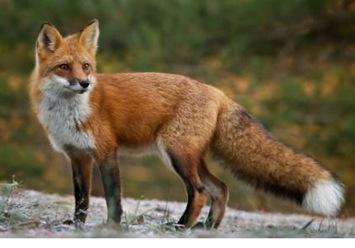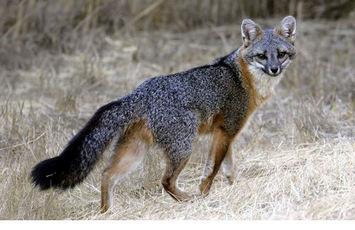Friends or Foes?
The Little Foxes
By Pat Dickey, Fairfax Master Gardener
One morning, as I was standing by the kitchen window, I saw the flash of a furry animal as he dashed under the neighbor’s deck and ran out again. This was the first time that I had seen any wild animals in the woods behind my townhouse, except for the usual squirrels chasing each other. He was reddish brown with pointed ears and a long, rather bushy tail. He must be the resident fox. I was concerned that he came so close to my house, especially since my little dog likes to play outside.

Vulpes vulpes
Red foxes are important because they play a large role in controlling rats and mice. They have adapted to living in urban and suburban areas. There are precautions that we should take so that foxes are not attracted to us. Teach children not to pet or approach them. Keep pets from chasing them. Foxes are attracted to unsecured trash cans, dumpsters, pet food kept outside, fruit trees and barbecue grills with the smell of food cooking. Waste birdseed from feeders attracts rodents which will then also attract foxes. It is important to keep all of these food sources under control.
There has been concern that foxes carry rabies. In Virginia, most rabies transmitted to humans is from bats. Rarely will humans have rabies from contact with foxes. If you come in contact with a rabid fox, immediately report it to the Virginia Department of Health.

Gray fox
You probably have also heard about fox hunting in Virginia. One of the most famous areas for fox hunting is Middleburg, VA. During the fox hunts, the fun is in chasing the fox, not killing it. The fox hunts last two or three hours and are more of a social occasion. The fox is usually smarter than all of the equestrian and foxhound pursuers and is rarely caught.
For the most part, foxes are our friends because they help to control undesirable animals around our homes and gardens. We just need to keep our distance and admire them.
References
Red Fox, Wildlife, Fairfax County, VA
Attracting Small Mammals, National Wildlife Federation
Red Fox, Virginia Department of Game and Inland Fisheries
Eastern Gray Fox, Virginia Department of Game and Inland Fisheries
Masters of Foxhound Association and Foundation, Middleburg, VA